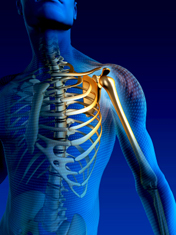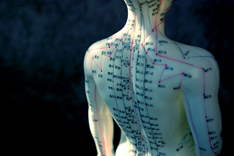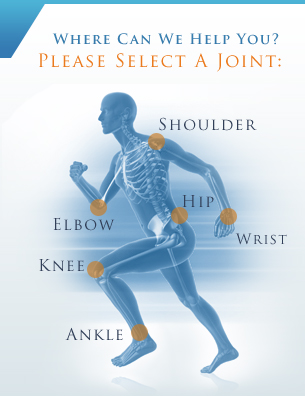
Procedures: Shoulder
|
|
AC Joint Repair and Reconstruction
 The acromioclavicular (AC) joint is the meeting point of the acromion and clavicle bones, often indicated with a visible bump in the area. AC joint injuries often occur as a result of a fall or other trauma, which may cause the acromion to move or separate from the clavicle, or cause the ligaments to be stretched or torn.
The acromioclavicular (AC) joint is the meeting point of the acromion and clavicle bones, often indicated with a visible bump in the area. AC joint injuries often occur as a result of a fall or other trauma, which may cause the acromion to move or separate from the clavicle, or cause the ligaments to be stretched or torn.
While conservative treatment is often used first for AC joint injuries, surgery may be required for injuries that are more severe or those that cause prolonged pain. Surgery for AC joint injuries may involve removing the end or restoring the position of the clavicle to relieve pain and allow the patient to resume normal functioning of the joint.
These procedures may be performed through arthroscopy or through a traditional open procedure, depending on the type and severity of each patient's individual condition. Arthroscopy offers patients smaller incisions, shorter recovery times and less trauma. Your surgeon will decide which type of procedure is best for you after a thorough evaluation of your condition.
Acromioclavicular Joint Reconstruction
The acromioclavicular (AC) joint is often injured in participants of physical contact sports such as football, soccer, rugby, hockey, and wrestling. The injury is known as a separated shoulder, but is in no way related to a dislocated shoulder, which actually involves the glenohumeral joint. AC joint injuries are normally caused by a fall on an outstretched hand or a strong force such as a hockey check or football tackle.
Treatment options for an AC joint injury may range from merely strengthening the joint through physical therapy exercises and stretching, to more advanced surgical procedures. Surgery for an AC joint injury aims to relieve pain and restore function by removing the damaged end of the clavicle bone. The more severe sub-types of shoulder separation (IV through VI) usually require surgery due to the severe displacement of the clavicle causing pain and pressure on the nearby trapezius muscle.
Acromioclavicular Joint Surgery
The acromioclavicular (AC) joint connects the collarbone to the shoulder blade and is susceptible to injuries that cause shoulder separation. The bones are held together by ligaments that can be injured on mild or severe levels. AC joint separations are classified into different grades that range from a simple sprain to a complete tear.
AC joint separations most commonly occur after falling on the shoulder and cause varying levels of pain and bruising. Grade one and two separations can usually be treated through conservative methods, but more severe injuries require surgery. Surgery aims to reconstruct the damaged ligaments and may require the use of pins, plates, screws or sutures. A sling may be needed to support and protect the shoulder, and full rehabilitation will take a few months.
Adhesive Capsulitis Treatment
 Adhesive capsulitis, also known as frozen shoulder, is a chronic inflammation of the shoulder capsule that causes abnormal tissue growth around the area, significantly restricting movement.
Adhesive capsulitis, also known as frozen shoulder, is a chronic inflammation of the shoulder capsule that causes abnormal tissue growth around the area, significantly restricting movement.
Other symptoms associated with this condition include pain and overall stiffness, often worsening at night and when it is cold. The cause of the condition is unknown, although some believe it may be linked to autoimmune complications. It occurs very rarely in individuals under the age of 40 and somewhat more frequently in those who exhibit risk factors such as:
- Connective tissue disorders
- Heart disease/previous stroke
- Diabetes
- Lung disease
- Physical trauma to shoulder
Treatment for this condition varies widely from simple non-steroidal anti-inflammatory drugs (NSAIDs) and light physical therapy, to invasive surgery designed to release the excess scar tissue. The doctor may opt for manipulation under anesthesia (MUA) as a sort of middle ground to break up scar tissue without an invasive procedure. This also stimulates fluid circulation into the shoulder, which is very helpful in progressed cases of frozen shoulder.









